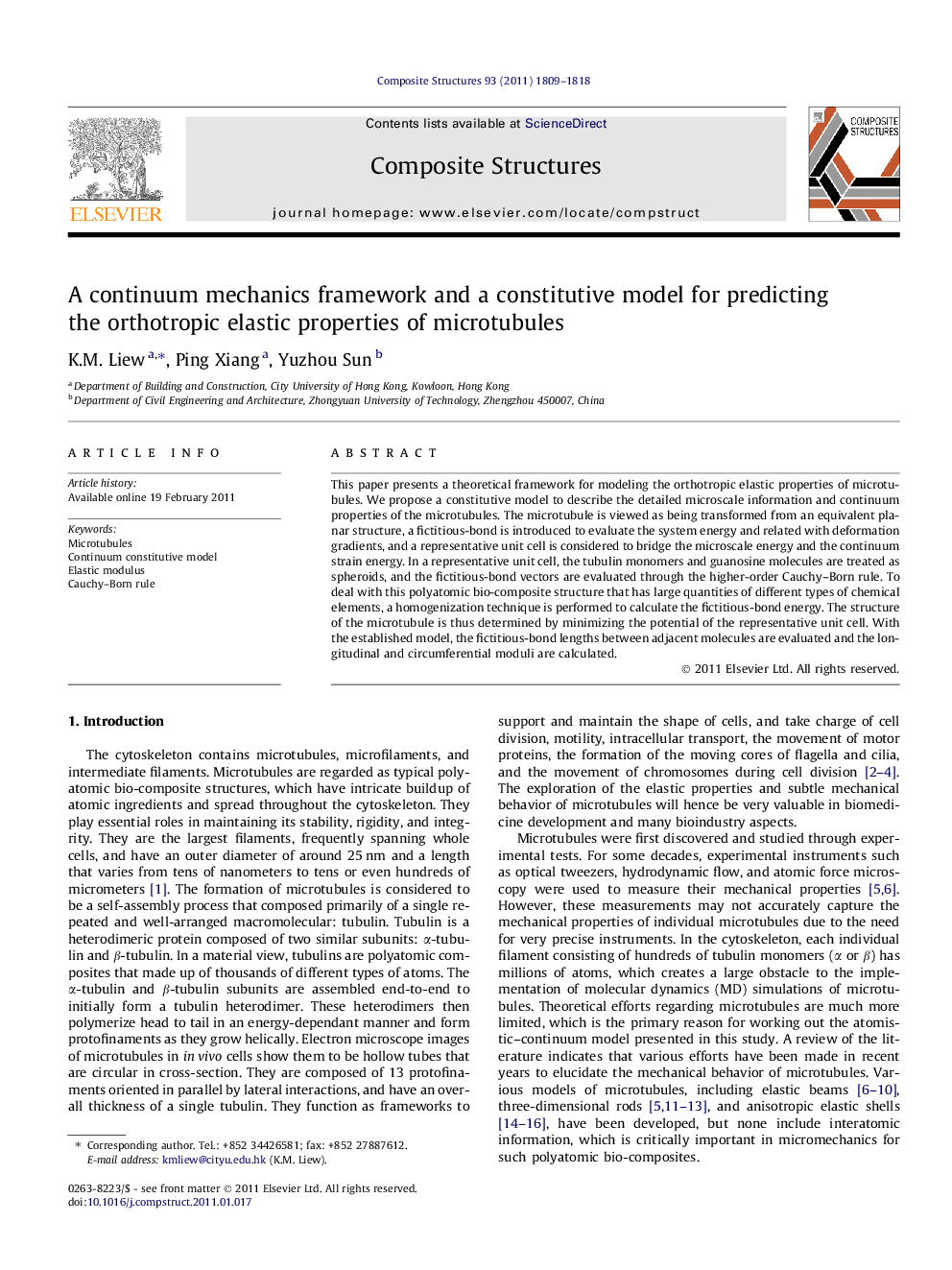| کد مقاله | کد نشریه | سال انتشار | مقاله انگلیسی | نسخه تمام متن |
|---|---|---|---|---|
| 252727 | 502972 | 2011 | 10 صفحه PDF | دانلود رایگان |

This paper presents a theoretical framework for modeling the orthotropic elastic properties of microtubules. We propose a constitutive model to describe the detailed microscale information and continuum properties of the microtubules. The microtubule is viewed as being transformed from an equivalent planar structure, a fictitious-bond is introduced to evaluate the system energy and related with deformation gradients, and a representative unit cell is considered to bridge the microscale energy and the continuum strain energy. In a representative unit cell, the tubulin monomers and guanosine molecules are treated as spheroids, and the fictitious-bond vectors are evaluated through the higher-order Cauchy–Born rule. To deal with this polyatomic bio-composite structure that has large quantities of different types of chemical elements, a homogenization technique is performed to calculate the fictitious-bond energy. The structure of the microtubule is thus determined by minimizing the potential of the representative unit cell. With the established model, the fictitious-bond lengths between adjacent molecules are evaluated and the longitudinal and circumferential moduli are calculated.
Journal: Composite Structures - Volume 93, Issue 7, June 2011, Pages 1809–1818